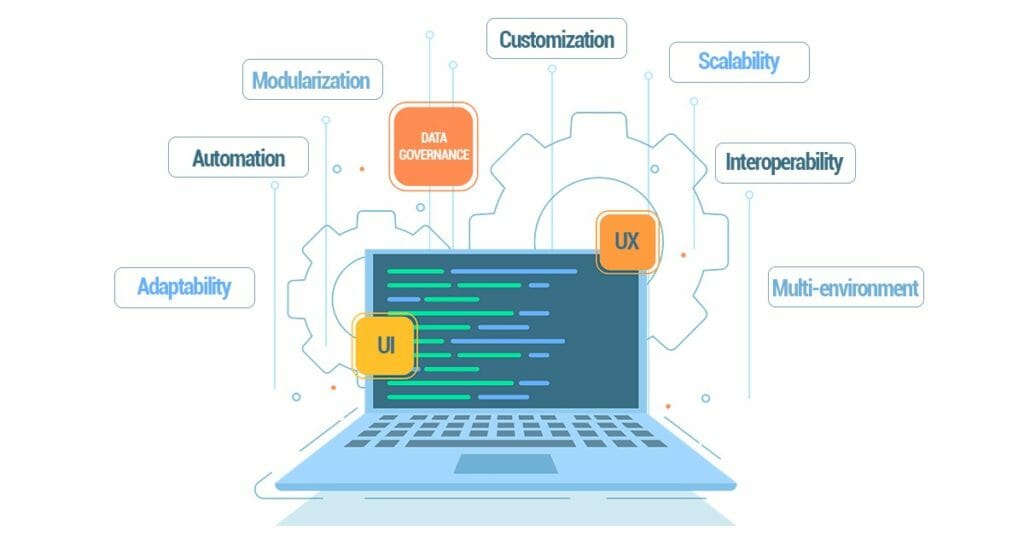When selecting technology solutions to support a Data Governance program it is important to conduct a thorough and focused assessment
While Data Governance is fundamentally about cultural and organizational aspects and cannot be solved only by technology, technological solutions play a fundamental role and are necessary to achieve the implementation of an effective and efficient data governance model. That is why there are many solutions on the market that work as accelerators to achieve a desired level of data governance, while helping organizations build and maintain that data culture necessary at all levels to reach the goal of becoming data-driven.
When talking about technology, benchmarks usually focus on the different features that a solution covers; the “WHAT”. But, when talking about data governance, this vision needs to be complemented with some added-value characteristics that will provide the corresponding mechanisms to adapt and evolve the organization’s strategy as requirements and needs change. This is the “HOW”.
The “WHAT”
On the one hand, focusing on functionalities and modules “designed for” Data Governance would include the following:
- Business Glossary
- Metadata management with data dictionary and catalog
- Traceability and data lineage
- Architecture, design, and data modeling
- Validation workflows and business process management
- Master and Reference Data Management
- Data Quality
- Data issues management
- Data security (Policies, access and use, user roles and profiling, data obfuscation)
- Dashboard with KPIs
- Management of datalabs and sandboxes
- Content management and communication portal
- Data Services Management
- Support for auditing activities
When evaluating a data governance solution, it is important to understand the degree of coverage of the features mentioned above. For example, most of the data governance solutions include a Business Glossary module, metadata management capabilities, traceability, and data lineage visualization etc. Some will include validation workflows, data quality, data security, …
However, evaluating a solution solely by the degree of completeness of these functionalities will deliver only part of the picture, which can result in a decision that the organization may regret. It is utopian to think that a single technological solution can accommodate all these functionalities in a self-contained product. Therefore, to avoid choosing a partial solution, it is essential to combine the functionality coverage analysis with another type of analysis based on a set of added-value features.
The “HOW”
To choose the solutions that would allow the organization to grow in the function of Data Governance in time and form according to its specific needs, it is crucial to devote attention to the following added-value characteristics:
- Automation: the processes must be as automatic as possible to reduce a user’s manual workload and tasks.
- UX & UI: the user interface, as well as its navigation and usability should be as intuitive and friendly as possible, for all types of audiences so that any user feels comfortable using it.
- Interoperability: it must be able to share and exchange data with other systems, it must not be a “black box”, nor a hermetic component, allowing integration with different types of systems through connectors and allowing the use of standards.
- Customization: as configurable as possible to support the strategy and the data governance model defined by the organization.
- Modularization: the different functionalities should be understood as independent pieces, so that the use of one of them does not limit the use of others, allowing the use of the necessary modules without damaging total experience.
- Multi-environment: capacity to govern multiple platforms supported by different technologies in a centralized way from the same instance.
- Scalability: adaptable as data volume increase along with the needs of processing and response, keeping performance stable over time.
- Adaptability: it must be able to adjust to the needs and the reality of the organization over time.
Additionally, for a long-term point of view, some characteristics to include could be:
- Vendor lock-in: as far as possible, ensure that the solutions selected do not “tie” the organization to a single vendor by acquiring large dependencies that would prevent migration from one solution to another except with great consequences.
- Learning curve: although these are powerful solutions, the learning curve should not be a problem for the users, learning the use of the solution should be easy, and the product should not require specific and expensive trainings and certifications.
- User limit: if this solution will be extended to the whole organization, consider solutions that do not license by users since this can result in a limited use of the solution due to increased costs.
- Cost of licenses: the cost must be flexible and scalable, under a pay-per-use model, allowing total control over the ROI without consider a high initial investment to maximize time-to-market and time-to-value.
The Actual Market
Looking at the market, storage and data processing solutions vendors usually offer modules oriented to data governance within their own platforms, but generally with a biased vision and low interoperability, becoming a problem of integration between technologies and resulting in a new challenge for the governance of applications and technology.
However, new vendors have emerged that specialize in the development of specific and independent data governance solutions, using an agnostic vision versus the data storage and processing technologies, providing the practice of enterprise data governance with a new set of tools to facilitate its execution.
Conclusion
Due to the complexity and extent of the practice, data governance solutions are usually focused on offering a set of functionalities and specific capacities and it seems very difficult, if not impossible, to find a single solution that covers everything.
Therefore, it is advisable to complement any evaluation with an additional vision that includes added-value characteristics to supports Data Governance, based on the needs of the organization, starting with the most critical aspects.







